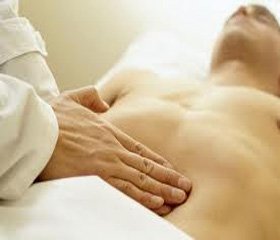Журнал «Медицина неотложных состояний» 5(52) 2013
Вернуться к номеру
The influence of severe concomitant injury of the abdomen on the translocation process obligate microflora in the experiment
Авторы: Krilyuk V.E. - National Medical Academy of Postgraduate Education named after P.L. Shupyk
Рубрики: Медицина неотложных состояний
Версия для печати
Introduction. Severe combined injury remains an important issue urgent surger. In Ukraine mortality in the structure of causes of death traumatic injuries occupy a leading place among the working age population. The largest share of this statistic takes the associated trauma, which is 60-70%. Much of the victims are severe combined trauma of the abdomen. Actual problems in patients with combined trauma of the abdomen is the development of complications in the postoperative period. Much attention in the process of allocating intestinal disorders. The analysis of scientific sources indicates that in recent years, much attention is paid to the study of pathophysiological features of intestinal failure and its impact on treatment outcomes affected.
Materials and methods. In adult male rats, Wistar, weighing 200 to 220 g simulated severe combined injury of the abdomen: after propofol anesthesia, the animal was applied dose challenge in the area of the abdominal cavity using a special device. Blood loss was achieved by crossing the femoral vein in a volume of 20 to 22% of blood volume animals, followed by fracture of the femur. Animals were examined at 1, 6, 12 and 24 h after causing injury. Each control point of the study included 12 animals. Material for microbiological examination were taken from the lateral parts of the abdominal cavity disposable swab companies Eurotubo (Spain) at 1, 6, 12 and 24 h. For the cultivation of microorganisms used following culture media: 1% glucose IPA, IPA blood sugar with 5% sheep red blood cells for the study of hemolytic properties and cultivation of anaerobes, yolk-salt agar (VSA) or mannitol-salt agar (MSA) for the isolation of staphylococci, Endo for qualitative and quantitative determination of Enterobacteriaceae, and laktoahar Blauroka environment for the growth of bifidobacteria and lactobacilli environment Tarr - to account for streptococci, furazolidone, agar FTA - for differentiation and quantifying micrococci and corynebacteria. After 24-96 hours of incubation at the optimum temperature of the colonies were counted and the result expressed the logarithm of the number of colony forming units (lg CFU) per 1 ml contents. Identification of isolates was performed by standard methods.
Statistical data processing was performed using STATISTICA 7.
Experiment with laboratory animals followed international standards of humane treatment of animals in accordance with the rules of the "European Convention for the protection of vertebrate animals used for experimental and other scientific purposes" (European Convention, 1984).
Results and discussion. As a result of microbiological studies carried out one hour after inflicted injury in animals with peritoneal habitat generally sown 155 strains of facultative anaerobic microorganisms, identified as: E. coli, enterobacteria and lactosonegative spore-forming rod-shaped bacteria of Bacillus. The average density of colonization was 6,2 ± 2,1 lg KUO /ml. After 6 h after the injury inflicted on animals were allocated 249 different strains of microorganisms. In addition to the mentioned above, in microbiocenosis were representatives of gram-positive (Gr +) coccal flora, in particular, S. aureus and α-hemolytic Streptococcus spp., and obligate anaerobic genera Clostridium and Bacteroides. Total seed grew and was 7,4 ± 2,3 lg CFU / ml. At 12 h after injury inflicted microbial contamination of peritoneal habitat increased. The density of colonization increased to 8,1 ± 2,7 lg KUO / ml. 578 plants were sown optional and obligate anaerobes. After 24 h the total contamination perytoneumu decreased and averaged 5,6 ± 3,1 lg KUO / ml. The total number of selected microorganisms also decreased. A total of 308 strains of cultured bacteria of different species.
Conclusions.
1. Clinically significant microbial colonization of the abdomen in severe combined trauma of the abdomen has been observed for 1 h after injury detention.
2. The maximum level of microbial contamination of peritoneal habitat in the experiment was observed at 12 h after injury, corresponding to the period of acute posttraumatic period.
3. The results indicate the need to find new treatments to reduce microbial translocation process from the pre-hospital phase.

